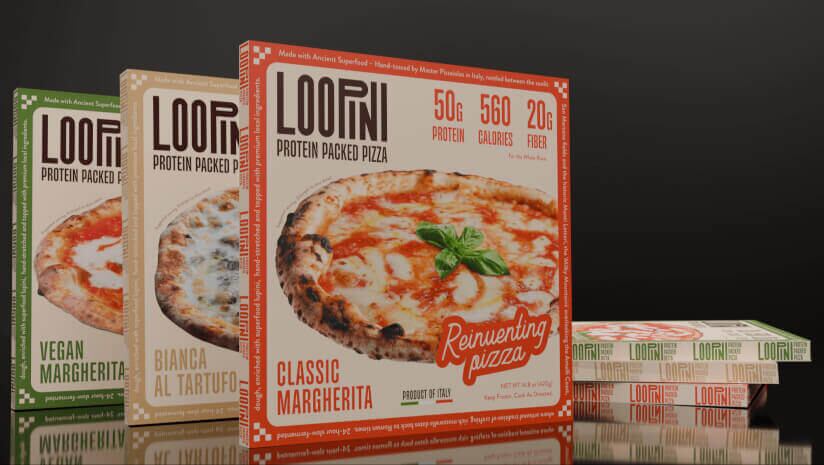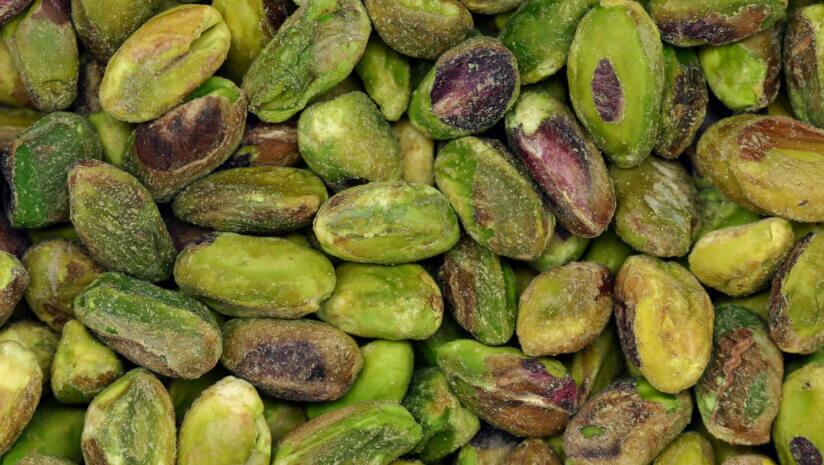While differentiated packaging can help products standout on shelf, the founder of the frozen chocolate ravioli startup Pastazerts warns brands should not deviate so far from the norm that they become difficult to stock because that could compromise consumers’ visibility or worse – prompt an otherwise interested retailer to pass on distribution.
When Pastazerts Founder Stephanie Berwick first launched in 2023, she used packaging that fit her budget – but didn’t easily fit on store shelves, which hindered her ability to easily explain to consumers at-a-glance what her first-to-market product is and how to use it.
“Pastazerts is my creation and it is really first-to-market. It is a chocolate ravioli dessert” made with traditional pasta dough to which organic cocoa powder is added and which is filled with “sweet, creamy” strawberry cheesecake, peanut butter and jelly and other flavors, Berwick explained at the Winter Fancy Food Show.
Just as creating Pastazerts was a natural evolution, so too was the packaging, said Berwick. She explained that initially the company opted for pre-made trays that fit their original ravioli size with a custom package to fit the trays to keep costs down.
Unfortunately, she explained, the initial packages were too long to sit side-by-side on shelf while standing up, which meant they had to lay flat – limiting the surface area consumers could see without opening the freezer door and picking up the container.
On the advice of several buyers, Berwick redesigned the package so that it fit better on shelf and could stand up – giving her a larger billboard with which to communicate to consumers.
More advice from founders for founders
Catchup on advice from the weekly Startup Spotlight series, featuring advice from founders for founders.
- Voyager Milk: Sidestep slotting fees with distribution in nontraditional channels -- Slotting fees at traditional grocery stores are a common stumbling block for emerging food and beverage brands with limited capital, but the founders of toddler milk startup Voyager Milk discovered it could dodge these expenses without compromising distribution by working with non-traditional outlets.
- Balancing values and ambition: Tasting India CEO on walking away from retail deal -- Knowing when to walk away from a retailer or distribution deal that compromises a company’s values or profitability can protect startups from potentially financially disastrous arrangements — a lesson Tasting India learned the hard way.
- TruJoy Yogurt reveals what retailers want for shelf space, how digital sampling helps -- The end-consumer is the center of the universe for most entrepreneurs innovating new foods and beverages, but as the founder of frozen dessert startup TruJoy Yogurt notes, emerging brands seeking shelf space in stores also need to know how stocking their product benefits retailers.
- Bezi: Retail is the 'best billboard you can have' -- Bezi’s retail-first strategy and in-house distribution allow the labneh brand to keep costs low, quickly measure velocity, and fine-tune their approach with their New York City retail customers.
To make the most of that space, Berwick worked with a branding specialist to ensure the new packaging both popped behind the freezer door and clearly communicated how to enjoy chocolate ravioli.
For example, Berwick opted to make ‘chocolate ravioli’ more prominent on pack than the company name because she need early adopters to recognize the product – hoping that after they tried it they would start to look for the company name.
She also dedicated space to explaining that Pastazerts offered “irresistibly delightful desserts” so that consumers know when and how to use the product.
The box also features a larger than real life photo of the ravioli rather than a window to ensure the product looked “perfect” and help consumers imagine it on their plates, she said.
Berwick also opted to include key nutrition information on the front of the pack along with a callout that her ravioli is made with all natural ingredients to increase the product’s permissibility.
In refining the packaging, Berwick said she needed to balance the needs of two consumer-sets: the retail buyer and shopper.
For the retail buyer, the packaging must demonstrate an ability to sell on shelf, complement rather than compete with other products nearby and in general boost the set as well as the their portfolio.
For the consumer, the packaging must clearly communicate the products value, including the brand’s story and what shoppers can expect when they bring the product home, she said.
Crowdsourcing helped cover package redesign and prove the concept
The package redesign was made possible in part by a recent successful $25,000 crowdfunding campaign with Honeycomb Credit, which Berwick said was a better fit for Pastazerts at this time than an equity raise.
“This business is expensive, especially frozen. There is a lot more layers of cost to it. So, I decided to get my feet wet asking for money from people who already believed in me and to see their reaction before going to real VCs or doing an equity round because I thought my company was still too early for that and I wanted more traction in the market before I start down that path,” she explained.
She opted for Honeycomb Credit because it is a debt round, which also made it easier to ask for money if she could promise to pay people back with interest, she said.
While $25,000 may sound like a lot for a new startup, “in the grand scheme of things, it is not that much when it comes to scaling a business,” Berwick said.
She explained that the money she raised went to three major components: the new packaging, the first production run with a co-manufacturer and support for new distribution, including demos and promotions at the roughly 40 new stores the brand entered earlier this year.
Berwick knows the fundraising cycle will start a new soon, but she is optimistic about being paid by her distributor and further growing the business in 2025 to include stores along the East Coast and eventually national as well as in food service.



